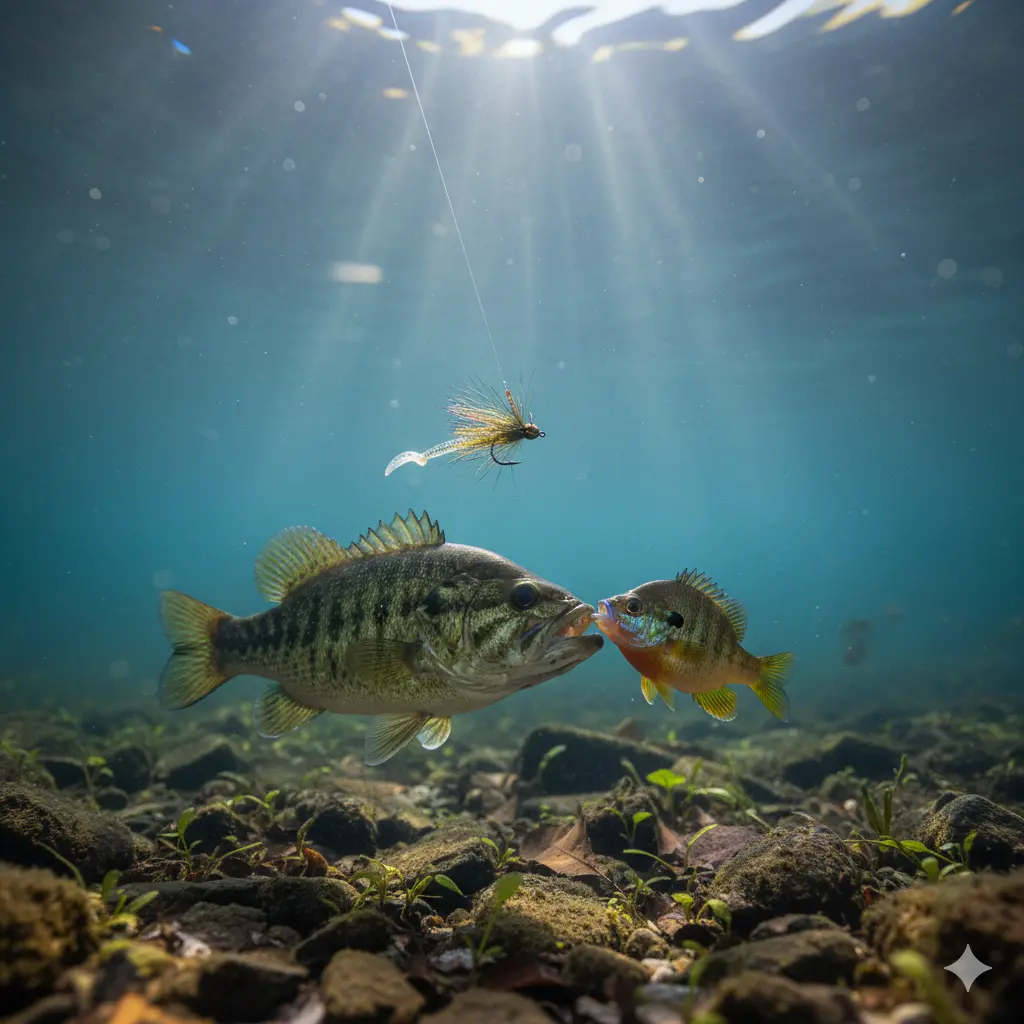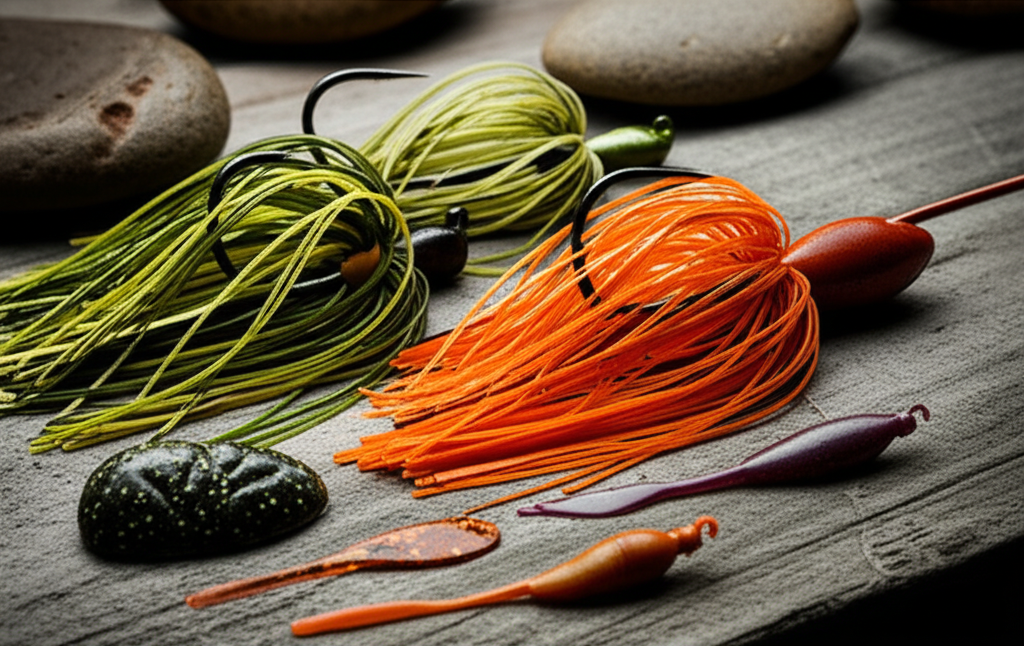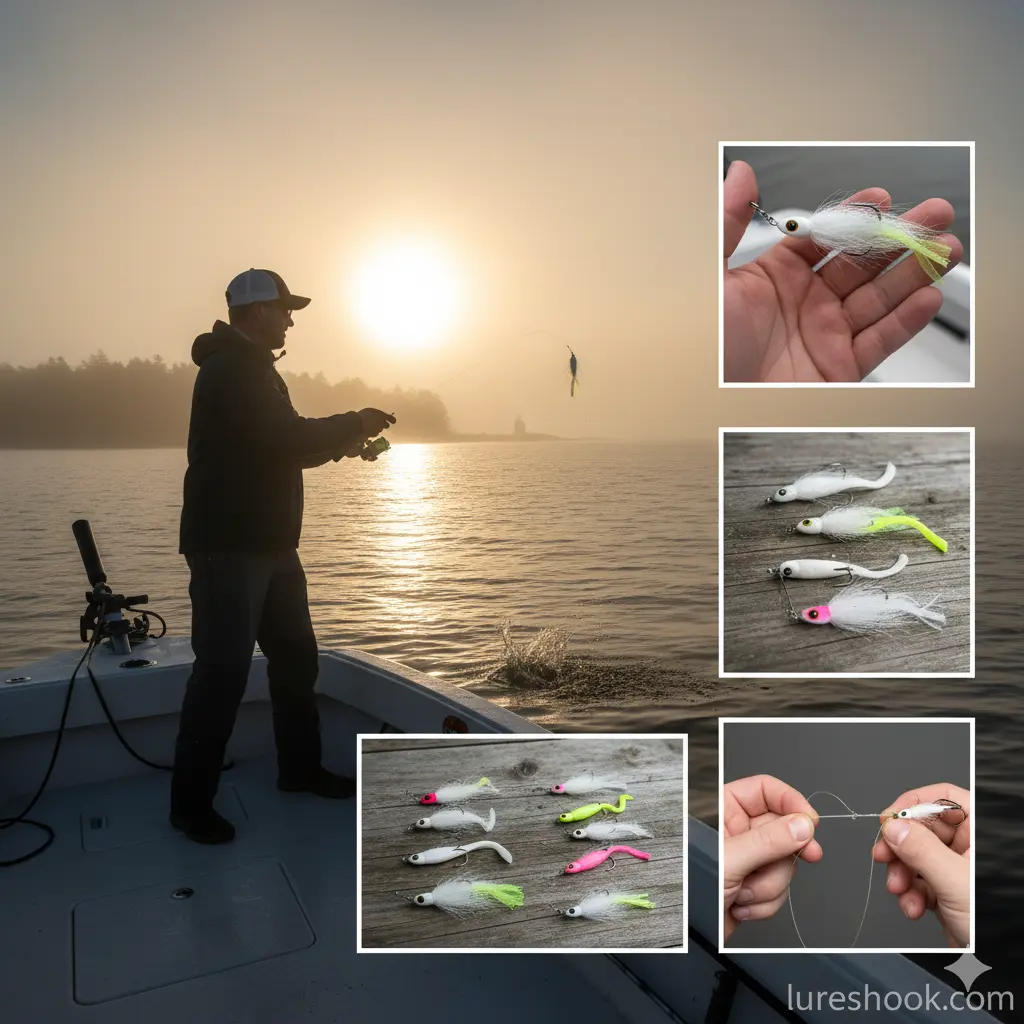Micro Magic: The Ultimate Guide to Finesse Fishing with Tiny Jigs in 2025
In a world of big baits and power fishing, sometimes the smallest offerings hold the greatest power. Welcome to the revolution of micro jig fishing. Our ultimate guide reveals the secrets of these tiny titans, from their subtle allure to the killer techniques that will land you more fish than ever before.
Table of Contents
- What Are Micro Jigs?
- Why Micro Jigs Are Your Secret Weapon
- Types of Micro Jigs & Their Applications
- Rigging Your Micro Jigs for Success
- Essential Micro Jig Fishing Techniques
- Species-Specific Micro Jig Strategies
- Essential Gear for Micro Jigging
- Pro Tips & Advanced Micro Jig Tactics
- Frequently Asked Questions About Micro Jigs
What Are Micro Jigs?
Micro jigs are the epitome of finesse fishing. These lures are typically defined by their diminutive size and weight, often ranging from an astonishing 1/200th of an ounce up to 1/8th of an ounce for freshwater applications. They can be as simple as a tiny lead or tungsten head with a single hook, or as complex as a miniature jig with a flowing marabou tail, a silicone skirt, or a perfectly matched soft plastic trailer. Unlike their larger counterparts, micro jigs are designed to be a subtle, non-intimidating meal, flawlessly imitating small insects, larvae, tiny baitfish, or even crayfish. Their unassuming nature is precisely what makes them so effective, especially on finicky or highly pressured fish.
Why Micro Jigs Are Your Secret Weapon
In a world of hard-hitting baits, micro jigs stand out because they:
- Match the Hatch: They perfectly mimic the small forage that many fish, especially crappie, trout, and panfish, feed on daily.
- Entice Finicky Fish: When fish are lethargic, pressured, or facing a cold front, a tiny, subtle offering is often the only thing that will trigger a bite.
- Offer Unmatched Versatility: You can fish them vertically, cast and retrieve them, or suspend them under a float. This versatility allows you to target fish in a variety of water depths and conditions.
- Work Where Other Lures Can’t: Their small size allows them to sneak into tight cover, under docks, and through sparse vegetation without getting snagged.
- Produce Constant Action: Even when targeting larger species, the micro jig often attracts smaller, more aggressive fish, leading to more bites and more fun on the water.
When to Use Micro Jigs
Micro jigs are at their best in these situations:
- Clear, Calm Water: Where a larger lure might spook fish, a micro jig’s subtle profile is a perfect, stealthy presentation.
- Cold Weather & Post-Frontal Conditions: When fish are sluggish and won’t chase a moving bait, the slow, subtle fall of a micro jig is irresistible.
- Targeting Specific Species: A go-to for crappie, panfish (bluegill, sunfish), and trout, but also highly effective for smallmouth bass and perch.
- Sight Fishing: The small profile and quiet entry allow for precise casts to visible fish without startling them.
Skill Level: Beginner to Intermediate
While the basic cast-and-retrieve is easy, mastering the feel and subtle bite detection requires practice. However, the sheer effectiveness of these baits makes them rewarding for any angler.
Beginner Rating: 7/10 – Easy to start, with a satisfying learning curve.
Types of Micro Jigs & Their Applications
The world of micro jigs is vast and varied, defined by the head shape and body material, each designed for a specific purpose.
1. Micro Jigheads with Soft Plastics
The most common form, these jigs consist of a lead or tungsten head and a small soft plastic trailer. The combination allows you to customize the action and profile.
- Jighead Shapes:
- Round Ball Head: The classic, all-purpose head.
- Mushroom/Ned Rig Head: Designed to stand up on the bottom, mimicking a feeding baitfish or crawfish.
- Shad/Minnow Head: Shaped like a baitfish head, great for pairing with paddletail plastics.
- Popular Trailers: Tiny grubs, finesse worms, minnow imitations, and subtle creature baits.
2. Marabou & Feather Jigs
These jigs feature a body tied with soft, natural materials like marabou or feathers. When wet, these materials create a subtle, breathing motion that is incredibly lifelike.
- Action: The feathers pulsate and expand on the pause, enticing fish with a realistic, lifelike movement.
- Best For: Crappie and trout, particularly when fish are feeding on insects or larvae.
3. Hair Jigs
Similar to marabou jigs, these use natural hair like deer or rabbit. They offer a stiffer, more consistent profile in the water, great for imitating small baitfish.
- Action: A more streamlined, slender profile that darts when twitched.
- Best For: Clear water and targeting fish actively feeding on minnows.
4. Skirted Micro Jigs
These are miniature versions of the classic bass jig, featuring a silicone or rubber skirt that flares out. They are excellent for imitating small crawfish or baitfish hiding in cover.
- Action: The skirt creates a pulsating, larger profile on the retrieve.
- Best For: Bass and perch, especially around rocky bottoms or submerged wood.
Rigging Your Micro Jigs for Success
The key to micro jig fishing is a streamlined, light-line setup that allows the lure to perform naturally.
1. The Knot
- The Loop Knot: Tying a loop knot (like a non-slip loop knot or a Rapala knot) to the jighead’s eye is crucial. It gives the jig maximum freedom to move and flutter on the fall, which is when many strikes occur.
- Direct Tie: A simple improved clinch knot is also effective and can be used to impart a more direct, darting action.
2. The Line
- Fluorocarbon Leader: If you’re using braided mainline, a leader is essential. Fluorocarbon (4-8 lb test) is nearly invisible underwater, which is a major advantage with these small, finesse baits.
- Mainline: Braid (6-10 lb test) is a great choice for mainline as it offers superior sensitivity to detect the slightest bites. Monofilament can also be used, but its stretch reduces feel.
3. Adding a Trailer
While many micro jigs can be fished alone, adding a soft plastic trailer can significantly enhance their effectiveness. Match the size of the trailer to the jighead for a balanced, natural presentation.
Essential Micro Jig Fishing Techniques
The retrieve is where the art of micro jigging comes to life. Your movements dictate how the lure behaves and how fish perceive it.
1. The Slow Drag & Hop
- Technique: Cast out and let the jig sink to the bottom. Keep your rod tip low and slowly drag the jig along the bottom with your reel. Every few seconds, give your rod a very subtle, upward twitch to “hop” the jig off the bottom, then let it fall back.
- Key Insight: This mimics a feeding insect or crawfish. Many bites happen on the fall.
2. The Vertical Jigging “Jiggle”
- Technique: Fish the jig vertically, either directly below the boat or suspended under a float. Give the jig a series of tiny, high-frequency “jiggles” with your wrist, then pause for a few seconds.
- Key Insight: This is a deadly method for targeting fish schooled up in deep water. It’s often called “hovering” or “dead-sticking.”
3. The Swimming Retrieve
- Technique: Cast and retrieve the jig with a slow, steady cadence. This retrieve is best with a paddletail or curly tail trailer, which will create a subtle swimming motion.
- Best For: Searching for active fish over open flats or along weed edges.
4. The Float & Jig
- Technique: Rig your micro jig under a small float (bobber). Cast to your target area and let the float sit. Give the line a slight twitch to make the jig dance, then let it sit again.
- Best For: Targeting a specific piece of cover, like a dock piling or a brush pile, and fishing for suspended fish.
Species-Specific Micro Jig Strategies
While micro jigs can catch nearly anything, they are particularly effective for a few key species.
1. Crappie Fishing with Micro Jigs ⭐⭐⭐
- Technique: Fish micro jigs vertically over brush piles and submerged timber. A 1/32 or 1/16 oz jighead with a minnow or grub trailer is a classic crappie killer. Use a float to stay in the strike zone.
- Top Colors: White, chartreuse, black/blue, and other high-visibility colors.
2. Trout & Panfish with Micro Jigs ⭐⭐⭐
- Technique: For trout, fish small marabou or hair jigs in streams and rivers, letting the current carry the lure naturally. For panfish like bluegill and sunfish, fish a 1/80 oz jig under a float near grass lines and beds.
- Top Colors: Natural colors like olive, black, brown, and white to imitate insects.
3. Bass with Micro Jigs ⭐⭐
- Technique: Micro jigs are a finesse weapon for pressured bass. Use a Ned rig-style jighead with a small worm or a skirted jig with a craw trailer. Fish them slowly and methodically around docks, laydowns, and rocky banks.
- Top Colors: Green pumpkin, black/blue, or crawfish patterns.
4. Saltwater Micro Jigging (Inshore & Offshore) ⭐⭐
- Technique: Micro jigs aren’t just for freshwater. Small metal jigs (1/2 to 2 oz) are used offshore for snapper, sea bass, and other bottom dwellers. Inshore, they are deadly for redfish and speckled trout.
- Top Colors: Chrome, pink, orange, and glow-in-the-dark.
Essential Gear for Micro Jigging
A specialized setup is key to feeling the subtle bites that micro jigs produce.
1. Rod Selection
- Power/Action: An ultralight (UL) or light (L) power rod is essential. Pair this with a fast or extra-fast action tip, which allows the rod to bend easily, providing the necessary shock absorption for light lines while retaining the sensitivity to feel the subtle taps of a bite.
- Length: A 6’6″ to 7’2″ length is a good all-around choice.
2. Reel Selection
- Type: A spinning reel in the 1500 to 2500 size is the perfect match. These reels are designed for light lines and offer smooth drag, which is critical when fighting a larger fish on thin line.
3. Line Selection
- Braid with Fluoro Leader: For maximum sensitivity, spool your reel with 6-10 lb test braided mainline. Then, use an FG or double uni knot to attach a 4-8 lb fluorocarbon leader. The braid’s no-stretch properties will transmit every little bite directly to your hand.
Pro Tips & Advanced Micro Jig Tactics
Take your micro jigging game to the next level with these expert insights.
1. Pay Attention to the Fall
- The “Line Watch”: A majority of strikes on a micro jig happen as it falls. Instead of feeling a “thump,” you’ll often see your line jump, go slack, or move sideways. Watch your line like a hawk.
2. Add Scent
- The Unfair Advantage: Scent is a huge factor in finesse fishing. Apply a high-quality scent to your plastic or skirted jig. It encourages fish to hold on longer, giving you more time to set the hook.
3. Customize Your Rig
- Mix and Match: Don’t be afraid to pair a jighead from one brand with a soft plastic trailer from another. Experiment with different head shapes, trailer styles, and colors until you find the perfect combination.
4. The Importance of Tungsten
- Small but Mighty: Tungsten is much denser than lead. For the same weight, a tungsten jighead is significantly smaller, providing a more compact, stealthy presentation while still allowing you to fish deeper water efficiently.
Frequently Asked Questions About Micro Jigs
Q: When should I use a micro jig instead of a spoon or spinner? A: Use a micro jig when fish are finicky and a fast, flashing lure is too aggressive. The micro jig’s subtle, life-like action and slow fall are perfect for cold, clear water or post-frontal conditions where a slow presentation is key. Q: Can I use a micro jig for ice fishing? A: Yes, absolutely! Micro jigs are one of the most effective baits for ice fishing. Their small size and realistic action are perfect for luring inactive fish in a confined area. Q: What’s the best color to start with? A: A great starting point is to match the local forage. If there are shad or minnows, use white or silver. If there are crayfish or insects, use green pumpkin, black, or brown. Always have a few high-visibility colors like chartreuse or pink for murky water.
Conclusion: The Ultimate Finesse Weapon
Don’t be fooled by their size. Micro jigs are a powerful, versatile, and essential tool for any angler’s tackle box. They unlock a world of finesse that can produce explosive results when other baits fail. By understanding the types, mastering the techniques, and using the right gear, you’ll discover that going small is the most effective way to land more fish, more often.
Ready to add some micro magic to your fishing? Rig up a tiny jig, head to the water, and prepare to be amazed by the results.
Related Guides:
- Mastering Finesse Fishing: A Beginner’s Guide
- The Crappie & Panfish Masterclass
- Essential Braid-to-Fluoro Knots Every Angler Needs to Know
- Trout Fishing 101: Tips & Techniques
What’s your favorite micro jig rig? Share your go-to setup and success stories in the comments below!



